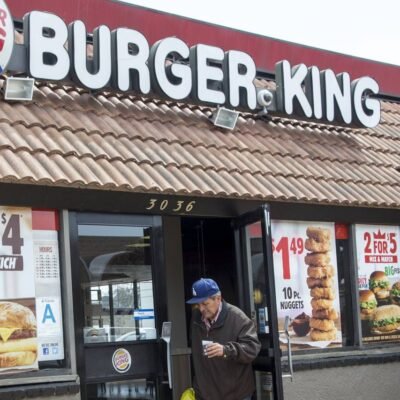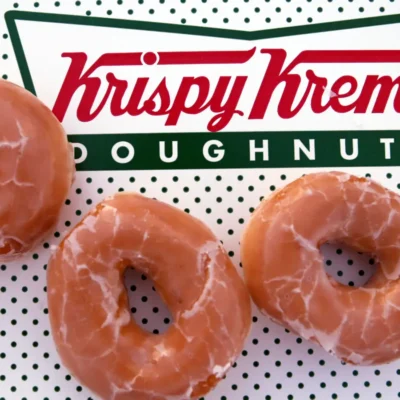In recent years, college athletics has undergone a seismic shift. The introduction of Name, Image, and Likeness (NIL) policies in 2021 has opened the door for student-athletes to sign lucrative endorsement deals, transforming the landscape of college sports. No longer are athletes waiting until they turn pro to cash in on their fame. From basketball stars to football prodigies, college athletes are now inking major deals with global brands before even entering professional drafts. This trend is reshaping the industry, empowering young athletes, and sparking debates about fairness, amateurism, and the future of college sports.

The Rise of NIL and Its Impact
The NIL era began with a landmark Supreme Court ruling in 2021, which declared that the NCAA’s restrictions on athletes profiting from their personal brands were unconstitutional. This decision allowed college athletes to monetize their name, image, and likeness through endorsements, sponsorships, and social media promotions. Since then, the floodgates have opened, and brands have rushed to partner with young stars who boast massive followings and marketable personas.
Unlike the past, when athletes had to wait until after college to sign endorsement deals, today.jdt2’s college stars are capitalizing on their fame while still in school. Football and basketball players, in particular, are securing the largest deals due to the popularity of their sports. However, athletes in less prominent sports like gymnastics, volleyball, and track are also finding opportunities to shine.
High-Profile Examples of Endorsement Deals
Some of the biggest names in college sports have already made headlines with their endorsement deals. For instance, Angel Reese, a standout basketball player at Louisiana State University, signed a multi-year deal with Reebok in 2023. The partnership includes plans for a signature sneaker set to launch in 2026, cementing Reese’s status as a rising icon in women’s sports. Her bold personality and strong social media presence have made her a perfect fit for Reebok’s push to re-enter the basketball market.

Similarly, Shedeur Simmons, the star quarterback for the University of Colorado, inked an NIL deal with Nike in 2024. As the son of NFL legend Deion Sanders, Shedeur’s deal not only highlights his on-field talent but also his potential to carry forward his father’s legacy with the brand. Another example is Quinn Ewers, the Texas Longhorns quarterback, who became a brand ambassador for Gold’s Gym in 2024. These deals show how brands are targeting athletes with strong personal brands and large followings, regardless of whether they’ve entered the professional draft.
Even younger athletes are getting in on the action. In a surprising move, Nike signed a 13-year-old soccer prodigy named Whitham to an NIL deal in 2024, one of the youngest athletes ever to secure such a contract. This partnership underscores how brands are investing in long-term talent development, betting on future stars before they even reach college.
Why Brands Are Betting on College Athletes
The appeal of college athletes to brands is clear. Many of these young stars have built massive social media followings, often dwarfing those of professional athletes. For example, LSU gymnast Olivia Dunne, with over five million followers across Instagram and TikTok, has become one of the highest-earning NIL athletes, reportedly making millions through partnerships with brands like American Eagle and Vuori. Her influence highlights how social media has become a game-changer in the endorsement world.

College athletes also bring authenticity and relatability to brands. Unlike established pros, these young stars are seen as approachable and grounded, making them ideal ambassadors for companies targeting younger audiences. Additionally, the excitement surrounding college sports—think March Madness or the College Football Playoff—creates a unique platform for brands to gain visibility.
From a business perspective, signing college athletes is a low-risk, high-reward strategy. These deals are often less expensive than contracts with professional athletes, yet they offer access to a passionate fan base and a growing market. According to Opendorse, a leading NIL platform, the NIL industry is worth an estimated $1 billion annually, with over 450,000 student-athletes across the U.S. earning money through partnerships.
Challenges and Controversies
While the NIL era has brought unprecedented opportunities, it’s not without challenges. The lack of federal regulation has led to a patchwork of state laws, creating confusion for athletes, schools, and brands. Some states, like California, allow high school athletes to sign NIL deals, while others, like Florida, restrict such opportunities until college. This inconsistency has sparked debates about fairness and access.
Critics also argue that the focus on endorsements could distract athletes from their education and athletic development. High-profile coaches like Nick Saban have expressed concerns about the shift away from traditional values of amateurism, with some labeling the system as “pay for play.” There’s also the issue of equity—while top-tier athletes in football and basketball dominate the NIL market, athletes in less visible sports or at smaller schools often struggle to secure deals.
For female athletes, the NIL landscape presents both opportunities and challenges. Stars like Caitlin Clark and JuJu Watkins have landed major endorsements, but some, like Olivia Dunne, face criticism for leveraging their appearance rather than athletic achievements. This has sparked discussions about gender dynamics and the pressure to conform to certain standards of marketability.
The Role of Collectives and Agents
To navigate the complex world of NIL, many athletes are turning to collectives and agents. Collectives, often backed by wealthy donors, pool money to offer NIL deals to athletes, sometimes creating bidding wars for top talent. These organizations have become a key part of recruiting, as schools with strong collectives can attract better players. However, some in the industry view collectives as a loophole that undermines the spirit of amateurism.
Agents and legal counsel also play a critical role. Athletes are advised to seek professional guidance to review contracts, negotiate terms, and protect their long-term interests. For example, a poorly structured deal could limit an athlete’s ability to sign with competing brands or lead to financial risks if the partnership ends unexpectedly. Legal experts emphasize the importance of understanding contract clauses, such as morals clauses, which allow brands to terminate deals if an athlete’s behavior tarnishes their image.
What This Means for the Future
The trend of college athletes signing major endorsement deals before drafts is only growing. As the NIL market matures, we can expect more brands to invest in young talent, particularly in emerging sports like women’s basketball and soccer. The rise of social media platforms like TikTok and Instagram will continue to amplify athletes’ earning potential, making a strong online presence just as important as on-field performance.
For athletes, the NIL era offers a chance to build wealth, develop business acumen, and prepare for life after sports. Many are using their earnings to give back, like Iowa State quarterback Rocco Becht, who hosted a free youth football camp in 2024. These stories highlight the positive impact of NIL beyond financial gain.
However, the lack of clear regulations remains a hurdle. Congress has discussed proposals to standardize NIL rules, but progress has been slow. Until federal guidelines are established, athletes and schools will need to navigate a complex and ever-changing landscape.
Conclusion
The rise of college athletes signing major endorsement deals before drafts marks a new chapter in sports. Empowered by NIL policies, these young stars are redefining what it means to be a student-athlete. From million-dollar contracts to creative partnerships, the opportunities are endless—but so are the challenges. As the industry evolves, one thing is clear: college athletes are no longer just playing for trophies. They’re building brands, securing their futures, and changing the game for generations to come.
Must Read :- Top 10 Best U.S. Colleges Changing Education in 2025






